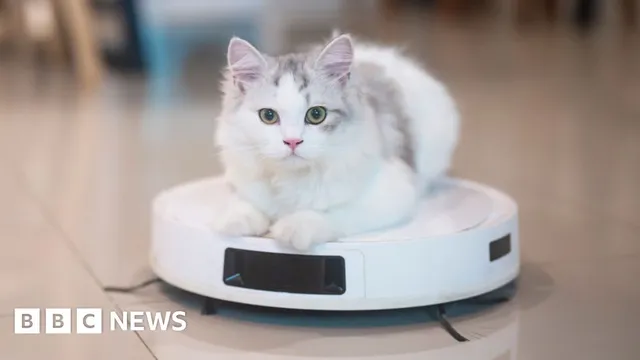
Robot vacuums can do more than just clean
2025-04-29 23:07- Scientists from the University of Bath and the University of Calgary investigated how robot vacuums can be modified for more tasks.
- They demonstrated that a Roomba can perform functions such as following users as a charger and displaying workout videos.
- The findings indicate a significant opportunity to enhance the utility of household robots beyond their conventional roles.
Express your sentiment!
Insights
In a recent study conducted by scientists at the University of Bath and the University of Calgary, researchers explored the untapped potential of robot vacuum cleaners, which are commonly perceived as single-purpose devices. They found that, on average, these appliances are only in use for about two hours a day, indicating significant idle time that could be utilized for other tasks. To demonstrate this potential, they modified a Roomba vacuum to complete various additional chores, effectively illustrating that robot vacuums can be reprogrammed to extend their utility in domestic settings. With the global household robot market projected to grow rapidly from a valuation of $10.3 billion in 2023 to $24.5 billion by 2028, the researchers argue that there is a pressing need for more adaptable robotic solutions that can seamlessly integrate into everyday life. In their experiments, the team successfully reprogrammed the Roomba to perform four distinct functions beyond its primary task of vacuuming: following the user as a mobile phone charger, displaying a workout video, monitoring live feeds to observe the oven, and indicating 'do not disturb' messages. Furthermore, they identified a total of 100 possible functionalities that such robots could potentially fulfill, albeit many of the suggestions would require additional modifications and tools not typically found in a regular household. The study highlights the significant underutilization of robot vacuum cleaners, urging consumers to reconsider their expectations of these appliances and encouraging the development of adaptable robots that can fulfill a wider range of practical tasks. The conversation surrounds how to maximize the efficiency of existing technologies, particularly when considering the increasing demand for smart home solutions in today's market. The researchers emphasize that the present capabilities of robot vacuums should not be viewed as limitations but as opportunities for improvement, ultimately leading to enhanced interaction between humans and household robots.
Contexts
The household robot market has been witnessing significant advancements and shifts in recent years. Growing consumer demands for automation in day-to-day tasks have led to an increase in the variety of robotic solutions available. Modern households are increasingly adopting robots for chores such as vacuuming, lawn care, and even cooking. Companies are innovating to create models that not only perform tasks efficiently but also integrate seamlessly into smart home ecosystems. The convergence of IoT technology with robotics has enabled users to control and schedule tasks remotely through smartphone applications, enhancing convenience and efficiency. As the market expands, we also see improvements in artificial intelligence driving these robots to become more adaptive and responsive to user preferences and household dynamics. The market dynamics indicate a strong trend toward personalization and connectivity. With advancements in machine learning and sensor technology, future robots are projected to cater more closely to individual household needs. For instance, robots that learn from user behaviors and preferences could optimize their cleaning patterns or suggest meal plans based on dietary restrictions. Additionally, the introduction of social robots is gaining traction, as households seek companions that can engage with family members and provide entertainment. This increase in robot functionality is supported by a decrease in production costs, making these devices more accessible to the average consumer. In terms of challenges, the rapid growth of the household robot market is accompanied by concerns regarding privacy and data security. As robots collect and process personal data to enhance their functionality, ensuring the security of this information is paramount. Manufacturers are under pressure to implement robust protective measures to prevent unauthorized access and data breaches. Moreover, the regulatory landscape for household robots is still evolving; clear guidelines need to be established to ensure consumer protection while fostering innovation. These challenges must be addressed to sustain consumer confidence and encourage wider adoption of household robots. Looking ahead, the future of the household robot market appears bright yet complex. With continuous technological advancements and growing consumer acceptance, the integration of robots into daily life is likely to deepen. Manufacturers are expected to focus on enhancing interoperability with existing smart home devices, facilitating a more holistic approach to home automation. Additionally, collaboration between universities, tech companies, and robotics firms might spur new innovations in robotic functionalities. As market competition increases, efficiency, affordability, and user-friendliness will become key differentiators that will shape the future of household robots.